Kenneth C. Davis's Blog, page 55
September 17, 2017
Constitution Day Pop Quiz: Who was the first man to sign the Constitution?
Answer: On September 17, Washington signed the parchment copy first, as President of the convention.
On September 17, 1787, 39 delegates to the Constitutional Convention meeting in Philadelphia, voted to adopt the United States Constitution.

United States Constitution (Image Courtesy of the National Archives)
To recap these events:
Working from May 25, when a quorum was established, until September 17, 1787, when the convention voted to endorse the final form of the Constitution, the delegates gathered in Philadelphia’s Pennsylvania State House were actually obligated only to revise or amend the Articles of Confederation. Under those Articles, however, the government was plagued by weaknesses, such as its inability to raise revenues to pay its foreign debts or maintain an army. From the outset, most the convention’s organizers, James Madison chief among them, knew that splints and bandages wouldn’t do the trick for the broken Articles.
The government was broke –literally and figuratively– and they were going to fix it by inventing an entirely new one. James Madison had been studying more than 200 books on constitutions and republican history sent to him by Thomas Jefferson in preparation for the convention. The moving force behind the convention, Madison came prepared with the outline of a new Constitution.
A reluctant George Washington, whose name was placed at the head of list of Virginia’s delegates without his knowledge, was unquestionably spurred by recent events in Massachusetts (Shay’s Rebellion, a violent protest by Massachusetts farmers). Elected president of the convention, he wrote from Philadelphia in June to his close wartime confidant and ally, the Marquis de Lafayette:
I could not resist the call to a convention of the States which is to determine whether we are to have a government of respectability under which life, liberty, and property will be secured to us, or are to submit to one which may be the result of chance or the moment, springing perhaps from anarchy and Confusion, and dictated perhaps by some aspiring demagogue.
On September 17, Washington signed the parchment copy first, as President of the convention. He was followed by the remaining delegates from the twelve states that sent delegates in geographical order, from north to south, beginning with New Hampshire. (Rhode Island was the only state that did not send a delegation.) When the last of the signatures was added –that of Abraham Baldwin of Georgia– Benjamin Franklin gazed at Washington’s chair, on which was painted a bright yellow sun. He then spoke, as James Madison recorded it:
I have, said he, often in the course of a session, and the vicissitudes of my hopes and fears as to its issue, looked at that behind the President without being able to tell if it was rising or setting: But now at length I have the happiness to know that it is a rising and not a setting sun.
In another perhaps more apocryphal tale, Franklin left the building and was confronted by a lady who asked, “Well Doctor, do we have a monarchy or a republic?” The witty sage of Philadelphia replied,
“A republic, madam, if you can keep it.”
This post is excerpted from America’s Hidden History, which offers fuller account of the Convention and the events that led to it. You can also read more about the Constitutional Convention and the Constitution in Don’t Know Much About History: Anniversary Edition, Don’t Know Much About the American Presidents and In the Shadow of Liberty.
For more about the Constitution, visit these sites:
The National Constitutional Center in Philadelphia and James Madison’s Montpelier
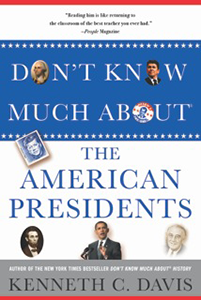
Don’t Know Much About® the American Presidents (Hyperion paperback-April 15, 2014)

Don’t Know Much About® History: Anniversary Edition

New York Times Bestseller
America’s Hidden History

August 28, 2017
Labor Day 2017
“Labor is the superior of capital and deserves much the higher consideration.”
— Abraham Lincoln, “First Annual Message to Congress” (December 3, 1861)
To most Americans, the first Monday in September means a three-day weekend and the last hurrah of summer, a final outing at the shore before school begins, a family picnic. The federal Labor Day was signed into law by President Grover Cleveland during his second term in 1894.
But Labor Day was born in a time when work was no picnic. As America was moving from farms to factories in the Industrial Age, there was a long, violent, often-deadly struggle for fundamental workers’ rights, a struggle that in many ways was America’s “other civil war.” (From “The Blood and Sweat Behind Labor Day”)
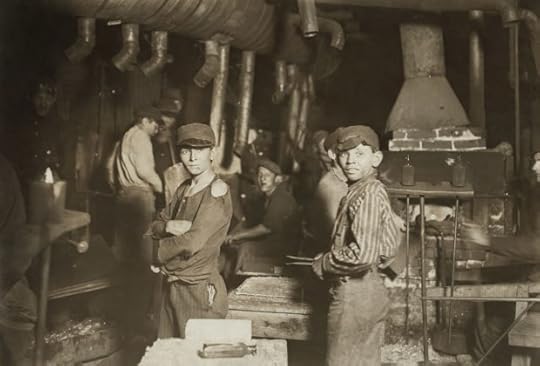
“Glassworks. Midnight. Location: Indiana.” From a series of photographs of child labor at glass and bottle factories in the United States by Lewis W. Hine, for the National Child Labor Committee, New York.
The first American Labor Day is dated to a parade organized by unions in New York City on September 5, 1882, as a celebration of “the strength and spirit of the American worker.” They wanted among, other things, an end to child labor.
In 1861, Lincoln told Congress:
Labor is prior to and independent of capital. Capital is only the fruit of labor, and could never have existed if labor had not first existed. Labor is the superior of capital, and deserves much the higher consideration. Capital has its rights, which are as worthy of protection as any other rights. Nor is it denied that there is, and probably always will be, a relation between labor and capital producing mutual benefits. The error is in assuming that the whole labor of community exists within that relation.
Today, in postindustrial America, Abraham Lincoln’s words ring empty. Labor is far from “superior to capital.” Working people and unions have borne the brunt of the great changes in the globalized economy.
But the facts are clear: In the current “gig economy,” the loss of union jobs and the recent failures of labor to organize workers is one key reason for the decline of America’s middle class.
Read the full history of Labor Day in this essay: “The Blood and Sweat Behind Labor Day” (2011)
Why Labor Day? Check out this Ted-Ed animated video
“Why do Americans and Canadians Celebrate Labor Day?”
This Ted-Ed animated video explains the history of the holiday and why it still matters today. (Reposted from 9/1/2014)
You can also view it on YouTube:
You can read more about the history and meaning of Labor Day in this piece I wrote for CNN a few years ago:
“The Blood and Sweat Behind Labor Day”
Read more about the period of labor unrest in Don’t Know Much About® History.
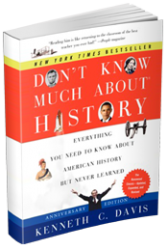
Don’t Know Much About History (Revised, Expanded and Updated Edition)
August 27, 2017
Don’t Know Much About® Lyndon B. Johnson
(Revise of 2013 essay)

Lyndon B. Johnson (March 1964)
(Photo: Arnold Newman, White House Press Office)
All I have I would have given gladly not to be standing here today.
Lyndon B. Johnson, in his first address as President to a joint session of Congress (November 27, 1963)
The 36th President, Lyndon B. Johnson, was born on August 27, 1908, in a small farmhouse near Stonewall, Texas on the Pedernales River. Coincidentally, it is also the date on which LBJ accepted the 1964 Democratic nomination for President. (Senator Hubert H. Humphrey was his Vice Presidential nominee.)
In some respects, history and time have been kinder to Lyndon B. Johnson than his tortured Presidency –and certainly the critics of his day—would have possibly suggested. A power broker extraordinaire during his days in Congress, especially during his twelve years in the Senate, Lyndon B. Johnson challenged John F. Kennedy for the Democratic nomination in the 1960 primaries, and then accepted Kennedy’s offer to become his Vice Presidential running mate. Johnson was credited with helping Kennedy win Southern votes and ultimately the election.

Lyndon B. Johnson taking the oath of office aboard Air Force One at Love Field Airport two hours and eight minutes after the assassination of John F. Kennedy, Dallas, Texas. Jackie Kennedy (right), still in her blood-soaked clothes, looks on. Public Domain-Source White House
On November 22, 1963, history and America changed with Kennedy’s assassination. Johnson became President, taking the oath of office aboard Air Force One with Jacqueline Kennedy, the dead President’s widow standing beside him.
Driven by a rousing sense of social justice, born out of his youth and upbringing in hardscrabble Texas and Depression-era experiences, he had become one of Franklin D. Roosevelt’s most loyal New Dealers. First in a federal job, then in Congress and later as “Master of the Senate.” As President, Johnson set the country on a quest for what he called the “Great Society,” looking for ways to end the great economic injustice and bitter racial disparity that existed in America in 1963. But his vision for a “Great Society” was counterbalanced, and ultimately overshadowed by his doomed course in pursuing the war in Vietnam.
In the midst of the war, recently released White House tapes reveal Johnson confided–
I can’t win and I can’t get out.
Fast Facts-
•Johnson was the first Congressman to enlist for duty after Pearl Harbor.
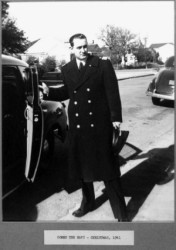
Lyndon B. Johnson as Navy Commander (Photo Credit: Lyndon B. Johnson Library and Museum)
•Johnson was the fourth president to come into office upon the death of a president by assassination. (The others were Andrew Johnson after Lincoln, Chester A. Arthur after Garfield, and Theodore Roosevelt after McKinley.)
•Johnson appointed the first black Supreme Curt Justice, Thurgood Marshall.
The Johnson Library and Museum is in Austin, Texas. Lyndon B. Johnson died at the age of 67 on January 22, 1973. His New York Times obituary.
Read more about Lyndon B. Johnson, his presidency and the Vietnam War and civil rights movement in Don’t Know Much About® the American Presidents and Don’t Know Much About® History.
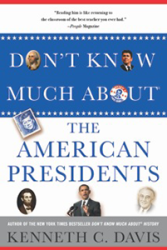
Don’t Know Much About® the American Presidents

Don’t Know Much About History (Revised, Expanded and Updated Edition)
August 24, 2017
Slavery was the “Corner-Stone:” Civil War Primary Documents
OK class. Primary Sources time. Here are three documents explaining the reasons behind Confederate secession and one notable speech by the vice president of the Confederacy, known as the “Corner-Stone” speech. They make clear what the war was about.
South Carolina Secession Declaration of Causes December 24, 1860
“But an increasing hostility on the part of the non-slaveholding States to the institution of slavery.“
Georgia Secession January 29, 1861
“For the last ten years we have had numerous and serious causes of complaint against our non-slave-holding confederate States with reference to the subject of African slavery.”
Declaration of Causes; Texas Secession (February 2, 1861)
“that the servitude of the African race, as existing in these States, is mutually beneficial to both bond and free, and is abundantly authorized and justified by the experience of mankind, and the revealed will of the Almighty Creator”
Alexander Stephens, “The Corner-Stone Speech” March 24, 1861
“Our new government is founded upon exactly the opposite idea; its foundations are laid, its corner- stone rests, upon the great truth that the negro is not equal to the white man; that slavery subordination to the superior race is his natural and normal condition.”
–Alexander Stephens, Vice President of the Confederacy
The controversy over the removal of Confederate Monuments has provoked some fine journalism and opinion writing; Here are a few examples of history in the headlines:
The Largest Confederate Monument in America Can’t Be Taken Down
University of Texas Removes Monuments
Confederate Statues are the easy part (New York Times Op-Ed)
August 18, 2017
Who Said It (8/18/2017)
Abraham Lincoln, Second Annual Message to Congress (December 1, 1862)

Abraham Lincoln (November 1863) Photo by Alexander Gardner
Fellow-citizens, we can not escape history. We of this Congress and this Administration will be remembered in spite of ourselves. No personal significance or insignificance can spare one or another of us. The fiery trial through which we pass will light us down in honor or dishonor to the latest generation. We say we are for the Union. The world will not forget that we say this. We know how to save the Union. The world knows we do know how to save it. We, even we here, hold the power and bear the responsibility. In giving freedom to the slave we assure freedom to the free–honorable alike in what we give and what we preserve. We shall nobly save or meanly lose the last best hope of earth. Other means may succeed; this could not fail. The way is plain, peaceful, generous, just–a way which if followed the world will forever applaud and God must forever bless.
Source:Abraham Lincoln: “Second Annual Message,” December 1, 1862. Online by Gerhard Peters and John T. Woolley, The American Presidency Project.
It should be noted also that Lincoln proposed in this speech compensated emancipation with a deadline in January 1900.
August 13, 2017
“Two Societies, One Black, One White”
(Revised post originally published on February 29, 2016)
Once again, I find it useful and necessary to repost this piece about the Kerner Commission, formed fifty years ago to address violence in American cities.
On July 27, 1967, President Lyndon B. Johnson established an 11-member National Advisory Commission on Civil Disorders. He was responding to a series of violent outbursts in predominantly black urban neighborhoods in such cities as Detroit and Newark. (New York Times account.)

Time Magazine cover August 4, 1967
On July 29, 1967, President Johnson made remarks about the reasons for the commission:
The civil peace has been shattered in a number of cities. The American people are deeply disturbed. They are baffled and dismayed by the wholesale looting and violence that has occurred both in small towns and in great metropolitan centers.
No society can tolerate massive violence, any more than a body can tolerate massive disease. And we in America shall not tolerate it.
But just saying that does not solve the problem. We need to know the answers, I think, to three basic questions about these riots:
–What happened?
–Why did it happen?
–What can be done to prevent it from happening again and again?
Source:Lyndon B. Johnson: “Remarks Upon Signing Order Establishing the National Advisory Commission on Civil Disorders.,” July 29, 1967. Online by Gerhard Peters and John T. Woolley, The American Presidency Project.
On Feb. 29, 1968, President Johnson’s National Advisory Commission on Civil Disorders, later known as the Kerner Commission after its chairman, Governor Otto Kerner, Jr. of Illinois, issued a stark warning:
“Our Nation Is Moving Toward Two Societies, One Black, One White—Separate and Unequal”
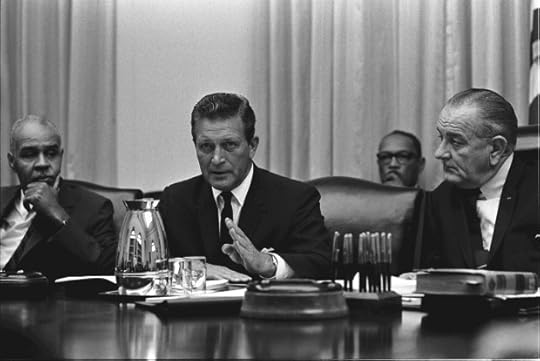
Governor of Illinois Otto Kerner, Jr., meeting with Roy Wilkins (left) and President Lyndon Johnson (right) in the White House. 29 July 1967 Source LBJ Presidential Library
The Committee Report went on to identify a set of “deeply held grievances” that it believed had led to the violence.
Although almost all cities had some sort of formal grievance mechanism for handling citizen complaints, this typically was regarded by Negroes as ineffective and was generally ignored.
Although specific grievances varied from city to city, at least 12 deeply held grievances can be identified and ranked into three levels of relative intensity:
First Level of Intensity
1. Police practices
2. Unemployment and underemployment
3. Inadequate housing
Second Level of Intensity
4. Inadequate education
5. Poor recreation facilities and programs
6. Ineffectiveness of the political structure and grievance mechanisms.
Third Level of Intensity
7. Disrespectful white attitudes
8. Discriminatory administration of justice
9. Inadequacy of federal programs
10. Inadequacy of municipal services
11. Discriminatory consumer and credit practices
12. Inadequate welfare programs
Source: “Our Nation is Moving Toward Two Societies, One Black, One White—Separate and Unequal”: Excerpts from the Kerner Report; American Social History Project / Center for Media and Learning (Graduate Center, CUNY)
and the Roy Rosenzweig Center for History and New Media (George Mason University).
Issued nearly half a century ago, the list of grievances reads as if it could have been written last week.
August 7, 2017
Don’t Know Much About® the Tonkin Resolution
[8/2016 post updated 8/7/2017]
What was the Tonkin Resolution?
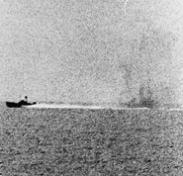
Photograph taken from USS Maddox (DD-731) during her engagement with three North Vietnamese motor torpedo boats in the Gulf of Tonkin, 2 August 1964. (Courtesy of the U.S. Naval Historical Cente)r
On August 7, 1964, Congress approved a resolution that soon became the legal foundation for Lyndon B. Johnson’s escalation of the Vietnam War. (New York Times story)
It came in August 1964 with a brief encounter in the Gulf of Tonkin, the waters off the coast of North Vietnam where the U.S. Navy posted warships loaded with electronic eavesdropping equipment enabling them to monitor North Vietnamese military operations and provide intelligence to CIA-trained South Vietnamese commandos. One of these ships, the U.S.S. Maddox was reportedly fired on by gunboats from North Vietnam.

Lyndon B. Johnson (March 1964) Photo: Arnold Newman, White House Press Office
The reported attack came in the midst of LBJ’s 1964 campaign against hawkish Republican Barry Goldwater. President Johnson felt the incident called for a tough response and had the Navy send the Maddox and a second destroyer, the Turner Joy, back into the Gulf of Tonkin. A radar man on the Turner Joy saw some blips, and that boat opened fire. On the Maddox, there were also reports of incoming torpedoes, and the Maddox began to fire. There was never any confirmation that either ship had actually been attacked. Later, the radar blips would be attributed to weather conditions and jittery nerves among the crew.
According to Stanley Karnow’s Vietnam: A History,
“Even Johnson privately expressed doubts only a few days after the second attack supposedly took place, confiding to an aide, ‘Hell, those dumb stupid sailors were just shooting at flying fish.’”
Johnson ordered an air strike against North Vietnam and then called for passage of the Gulf of Tonkin Resolution. This legislation gave the president the authority to “take all necessary measures” to repel attacks against U.S. forces and to “prevent further aggression.” The resolution not only gave Johnson the powers he needed to increase American commitment to Vietnam, but allowed him to blunt Goldwater’s accusations that Johnson was “timid before Communism.”
The Gulf of Tonkin Resolution passed the House unanimously after only forty minutes of debate. In the Senate, there were only two voices in opposition. What Congress did not know was that the resolution had been drafted several months before the Tonkin incident took place. In June 1964, on LBJ’s orders, according to journalist-historian Tim Weiner,
“Bill Bundy, the assistant secretary of state for the Far East, brother of the national security adviser, and a veteran CIA analyst, had drawn up a war resolution to be sent to Congress when the moment was ripe.” (Legacy of Ashes: The History of the CIA, p. 280)
Congress, which has sole constitutional authority to declare war, had handed that power over to Johnson, who was not a bit reluctant to use it. One of the senators who voted against the Tonkin Resolution, Oregon’s Wayne Morse, later said,
“I believe that history will record that we have made a great mistake in subverting and circumventing the Constitution.”
After the vote, Walt Rostow, an adviser to Lyndon Johnson, remarked,
“We don’t know what happened, but it had the desired result.”
In January 1971, Congress repealed the Gulf of Tonkin resolution as popular opinion grew against a continued U.S. military involvement in Vietnam
Since Vietnam, United States military actions have taken place as part of United Nations’ actions, in the context of joint congressional resolutions, or within the confines of the War Powers Resolution (also known as the War Powers Act) that was passed in 1973, over the objections (and veto) of President Richard Nixon.”
The War Powers Resolution came as a direct reaction to the Gulf of Tonkin Resolution, as Congress sought to avoid another military conflict where it had little input.
“The Gulf of Tonkin Resolution and the Limits of Presidential Power” National Constitution Center
In 2005, the National Security Agency (NSA) issued a report reviewing the Tonkin incident in which it said “no attack had happened.” (Weiner, p. 280)
The National Endowment for the Humanities website Edsitement offers teaching resources on Tonkin and the escalation of the Vietnam War.
Read more about Vietnam, LBJ and his administration in Don’t Know Much About® History, Don’t Know Much About® the American Presidents. The Vietnam War and the Tonkin Resolution are also covered in a chapter on the Tet offensive of 1968 in THE HIDDEN HISTORY OF AMERICA AT WAR.

Don’t Know Much About® the American Presidents (Hyperion Paperback-April 15, 2014)
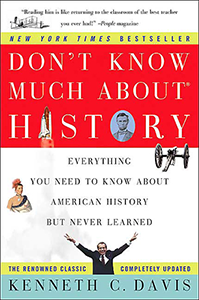
Don’t Know Much About® History: Anniversary Edition (Harper Perennial and Random House Audio)
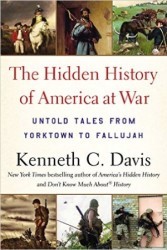
Now In paperback THE HIDDEN HISTORY OF AMERICA AT WAR: Untold Tales from Yorktown to Fallujah
August 4, 2017
August 6-“Hiroshima Day”

The Atomic Bomb Dome-Hiroshima (Photo Courtesy of Hiroshima and Nagasaki Remembered)
[Repost of 2016 essay]
On August 6, 1945, the New York Times asked:
“What is this terrible new weapon?”
(Source, New York Times, August 6, 1945: “First Atomic Bomb Dropped on Japan”)
The story followed the announcement made by President Truman:
“SIXTEEN HOURS AGO an American airplane dropped one bomb on Hiroshima, an important Japanese Army base. That bomb had more power than 20,000 tons of T.N.T. It had more than two thousand times the blast power of the British ‘Grand Slam’ which is the largest bomb ever yet used in the history of warfare.”
August 6, 1945
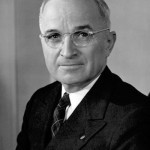
President Harry S. Truman
(Photo: Truman Library)
(“Statement by the President Announcing the Use of the A-Bomb at Hiroshima”: Truman Library and Museum)
The first atomic bomb was exploded in a test at Alamogordo, New Mexico, on July 16, 1945. President Truman, who had taken office upon the death of President Roosevelt on April 12 without knowledge of the Manhattan Project or the atomic bomb’s existence, was alerted to the success of this test at a meeting with Churchill and Stalin at Potsdam, a city in defeated Germany. (See this recent post on Potsdam)
The atomic bomb was detonated over Hiroshima on August 6, 1945. A second device, a plutonium bomb, was used against the city of Nagasaki on August 9. Japan surrendered on August 14.
Almost since the day the first bomb was dropped on Hiroshima, critics have second-guessed Truman’s decision and motives. A generation of historians have defended or repudiated the need for unleashing the atomic weapon.
What history has confirmed is that the men who made the bomb really didn’t understand how horrifying its capabilities were. Of course, they understood the destructive power of the bomb, but radiation’s dangers were far less understood. As author Peter Wyden tells it in Day One, an account of the making and dropping of the bomb, scientists involved in creating what they called “the gadget” believed that anyone who might be killed by radiation would die from falling bricks first.
In less than one second, the fireball had expanded to 900 feet. The blast wave shattered windows for a distance of ten miles and was felt as far away as 37 miles. Over two-thirds of Hiroshima’s buildings were demolished. The hundreds of fires, ignited by the thermal pulse, combined to produce a firestorm that had incinerated everything within about 4.4 miles of ground zero.
The estimated death toll was eighty thousand people killed instantly in Hiroshima; as many as 90 percent of the city’s nurses and doctors also died instantly. By 1950, as many as 200,000 had died as a result of long-term effects of radiation.) The death toll in Nagasaki also reached 80,000 by the end of 1945.
Today should not be a day to argue about the politics of the bomb. It should be a day of solemn remembrance of these victims. And of contemplating the horrific power of the weapons we create.
The City of Hiroshima Peace Memorial Park and Museum offers an English language website with a history of Hiroshima and the effects of the bombing.
You can read more about Hiroshima and the dropping of the atomic bombs in Don’t Know Much About History and more about President Truman in Don’t Know Much About the American Presidents and in The Hidden History of America At War.

Don’t Know Much About History (Revised, Expanded and Updated Edition)

Now In paperback THE HIDDEN HISTORY OF AMERICA AT WAR: Untold Tales from Yorktown to Fallujah

Don’t Know Much About® the American Presidents
August 3, 2017
Pop Quiz: Which President’s father administered the oath of office to his son?
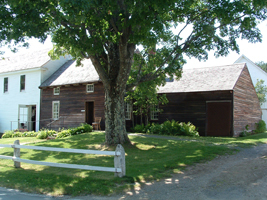
Calvin Coolidge Birthplace Vermont Division for Historic Preservation President Calvin Coolidge State Historic Site
Answer: Calvin Coolidge’s father –a justice of the peace– administered the oath of office at 2:47am on August 3, 1923. Coolidge became president upon the death of Warren G. Harding on August 2, 1923.

Calvin Coolidge, 30th President of the United States. Courtesy White House.



